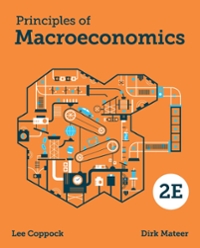Question
Consider the monetary intertemporal model. There is no inflation. 1. Suppose that the price of oil, an important input in production, doubles. How would you
Consider the monetary intertemporal model. There is no inflation.
1. Suppose that the price of oil, an important input in production, doubles. How would you capture this in the model? Discuss. (Neglect oil/energy production in Canada.)
2. Derive the impact of the oil price shock on output, prices, the real interest rate, employment, and the real wage. What is the intuition for the change in prices?
3. Now suppose that nominal wages are sticky. Initially, the economy is at full employment. Derive the effect of the oil price shock in the Keynesian framework.
4. What should the central bank do if its objective is to stabilize prices? What should it do if its objective is to speed up the adjustment of employment to its long run level?
5. From the website of the Bank of Canada: "The goal of monetary policy is to contribute to solid economic performance and rising living standards for Canadians by keeping inflation low, stable, and predictable." Based on your analysis above, what do you think the Bank should do in the event of an oil price shock? What considerations influence your decision?
Step by Step Solution
There are 3 Steps involved in it
Step: 1

Get Instant Access to Expert-Tailored Solutions
See step-by-step solutions with expert insights and AI powered tools for academic success
Step: 2

Step: 3

Ace Your Homework with AI
Get the answers you need in no time with our AI-driven, step-by-step assistance
Get Started


